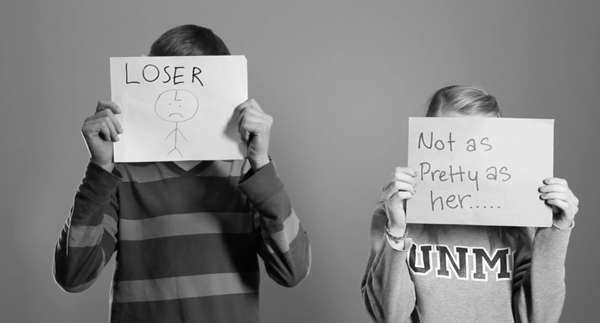KU-led study uses drama therapy to address LGBTQ bullying

LAWRENCE — Middle school can be an unpleasant time for any student, but for those who deal with bullying, the results can be tragic. A University of Kansas professor has led a study that used drama therapy to teach students how to recognize and react to LGBTQ bullying. The researcher then intends to take the findings to educators across the country.
 Robert Harrington, professor of education at KU, led a project with KU student Rachel Bromberg that involved students from seven Kansas middle schools in drama therapy. The students volunteered their time to use drama, acting out scenarios and producing art and music, to understand the topic of bullying of lesbian, gay, bisexual, transgender and questioning individuals.
Robert Harrington, professor of education at KU, led a project with KU student Rachel Bromberg that involved students from seven Kansas middle schools in drama therapy. The students volunteered their time to use drama, acting out scenarios and producing art and music, to understand the topic of bullying of lesbian, gay, bisexual, transgender and questioning individuals.
“One type of bullying that is especially insidious, but doesn’t get talked about, is LGBTQ bullying,” Harrington said. “And the reason it’s not talked about is because it’s not included in schools’ anti-bullying policies, if they even have policies.”
Harrington, who teaches an online course in bullying prevention for K-12 and higher education students, said LGBTQ bullying, like other forms of the problem, happens over a sustained period of time, in which the aggressor targets someone because of their sexual orientation and attempts to create a power differential. Also like other forms of bullying, it can often have tragic results such as a student not attending school or worse, viewing self-harm or suicide as the only solution. Unlike other forms of bullying, many schools will not talk about it because it is an uncomfortable subject for many to discuss. It is also unique because to report the problem, it is often necessary to "out" an individual, which can cause a number of other problems.
“It can happen right in the classroom and the teacher might not do anything about it, because it’s not something most people want to talk about,” Harrington said. “This study looked at middle schools and how they can prevent LGBTQ bullying because that time is the height of bullying, and also because that’s the age of hormones and students starting to think about this.”
The students involved in the drama therapy group met for 6 two-hour sessions outside of the schoolday. They used drama therapy to learn about different themes of bullying, its effects, why people might respond in self-harming ways, what bystanders can do and, finally, they produced a five-minute public service video called “Make it Better,” available online.
There are three types of people who witness bullying: Active bystanders who take part, passive bystanders who may realize it’s wrong but do nothing and defenders who take action, Harrington said. Passive bystanders often do nothing because they don’t know what they can do or are afraid that if they take action they might be the next victim.
“If you can change the social climate of a school, that’s really the best way to handle bullying,” Harrington said. “We’re trying to educate middle schoolers to recognize LGBTQ bullying, know that it has ramifications and that they do have the power to do something about it.”
Upon completing the drama therapy project, participants were surveyed and took part in a 45-minute focus group, both of which were content-analyzed. The results are included in an article Harrington has submitted to the journal Bullying and Social Aggression. The journal is also co-sponsoring a keynote address he will deliver on the topic at the University of Texas A&M at Commerce. Several themes emerged, including identification, trust, the need for further participation in future trainings, the ripple effect and personal experiences.
Students reported increased awareness of different types of bullying and that many of them had unknowingly witnessed incidents in their own schools.
“In other words they thought bullying was just someone taking your lunch money, but they learned there was so much more possible, including LGBTQ bullying, and that you can, in fact, help the bully,” Harrington said.
The students involved in the study also served as a panel at the annual Strategies for Educational Improvement conference this year held at KU’s School of Education. The event brings hundreds of educators together every June to discuss research, teaching and improving education. Uncoached, the youths shared what they learned in the drama therapy intervention and requested the educators present to take action when bullying is reported in their schools. They also suggested that strategies to teach students how to be a defender bystander should be implemented for all in their schools.
“The action we can take is preventing this type of bullying,” Harrington said. “And teaching tolerance and diversity in all of its forms. Prevention of bullying works so much better than waiting and responding.”
Image: Taken from a PSA video by study participants.